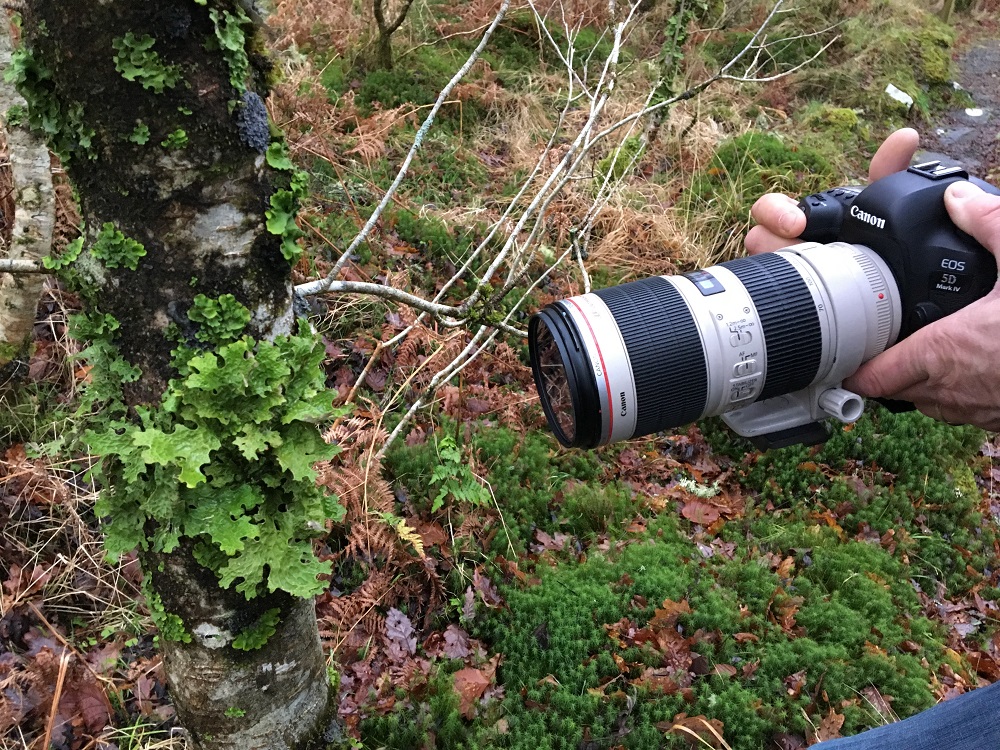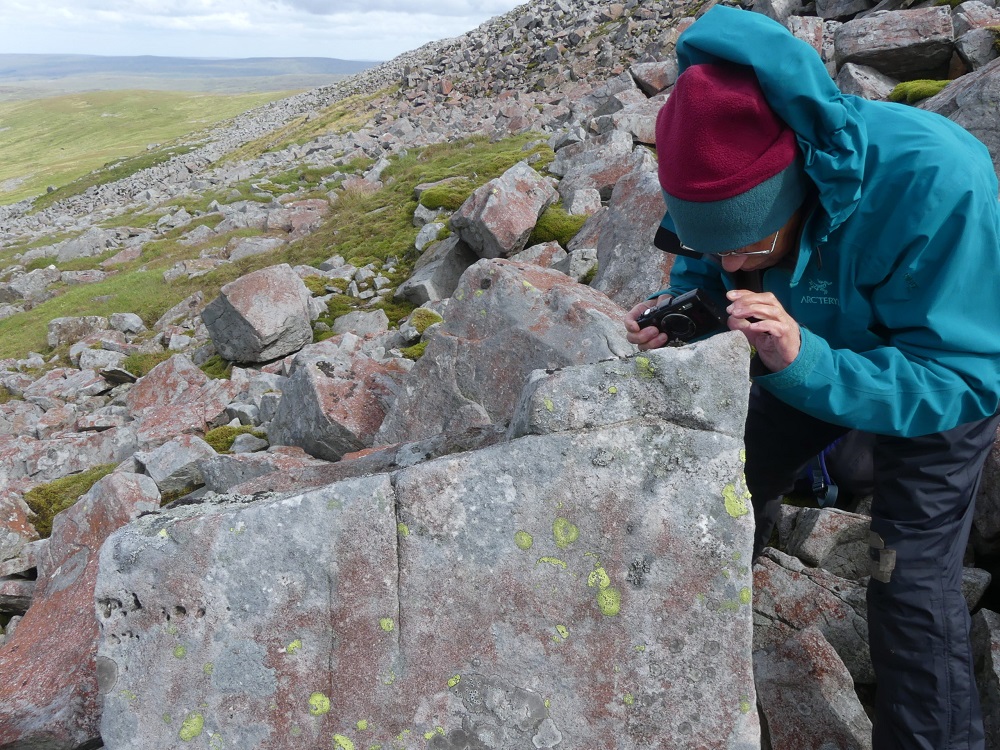
There are a number of reasons you might wish to photograph lichens, and the approaches, level of skill and equipment required can vary with your reason (or reasons). Lets consider a few possibilities:
- as an aide-memoire, to remind yourself of what a particular lichen looks like in the field, as opposed to your herbarium;
- for artistic reasons. Many lichens can be aesthetically appealing and you might want to capture some of that appeal in a photograph. Or you might wish to use the photo as a basis for a painting, for example;
- for publication in a scientific journal or a magazine such as British Wildlife as part of a paper or an article.
Another consideration is whether you only wish to capture a general view of a lichen or whether you want to capture close-up (macro-photography) or even microscopic (photo-micrography) details.
Let's look at each of these scenarios in terms of what equipment and skills you might need, and what approaches you might adopt. {NB - the following notes assume you will be working with a DIGITAL camera. Much of what is said will apply to film, but equally much of it will not}
For general photos of lichens as an aide-memoire almost any modern compact camera (or even phone camera) will do, although some are more suitable than others. Factors to consider include:
- minimum focusing distance, which will govern what level of close-up shot you can achieve; many cameras will allow you to shoot very close indeed - 1cm or less. However, the closer you get, the more limited is the depth-of-field (DoF) going to be.
- how well the camera copes in low-light conditions. Remember most basic cameras will automatically compensate for low light levels by increasing the ISO setting - which means you will probably get a useable image - but at the cost of image quality. How serious this is will depend on how much light there is and the quality of the camera). Using flash and/or a tripod can help - (see later). But carrying a tripod around rather counteracts one of the advantages (greater portability) of a compact camera.
More on identifying lichens from photographs here.
General advice (January 2021)
Many lichenologists use compact digital Olympus TG-4, TG-5 or TG-6 cameras which do good close-ups and "stacking" to get in-focus macros shots. Larger Digital SLRs with a suitable lens and bridge cameras may also do good macro close-ups.
There are also magnibands and clip-on attachments for mobile phones which are pretty good for photos in the field.
Phone cameras can also be used to take photos looking down through a microscope; various attachments are available to clamp a phone in place. Alternatively there are special cameras which replace the eye piece.
Various Facebook groups for lichens etc exist and people occasionally discuss photography.

Caz Walker photographing Umbilicaria hyperborea on Cross Fell © Chris Cant